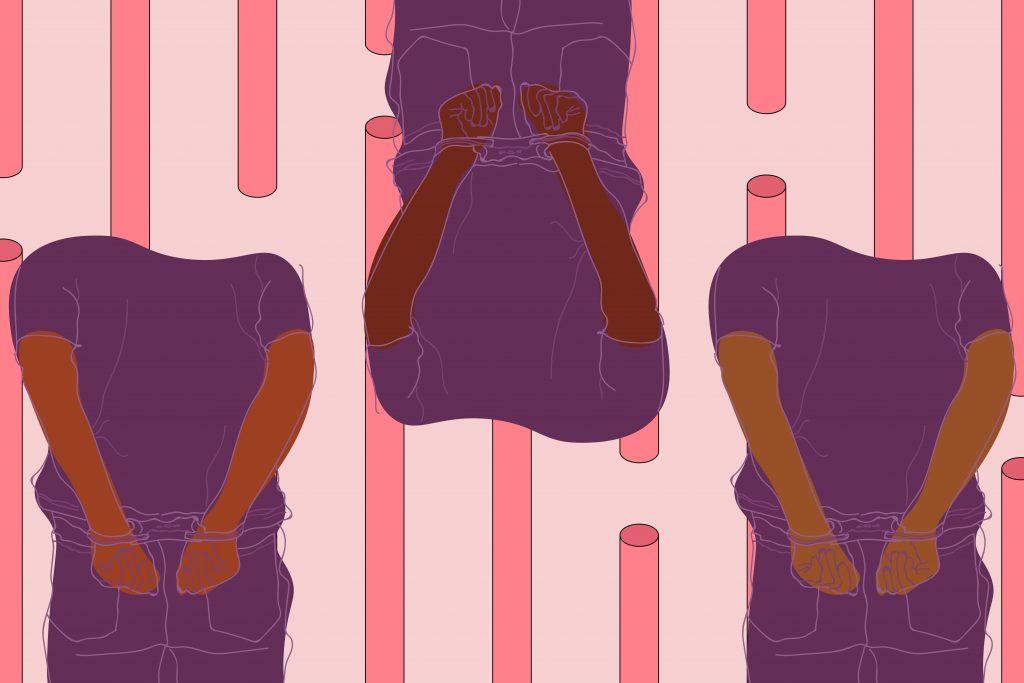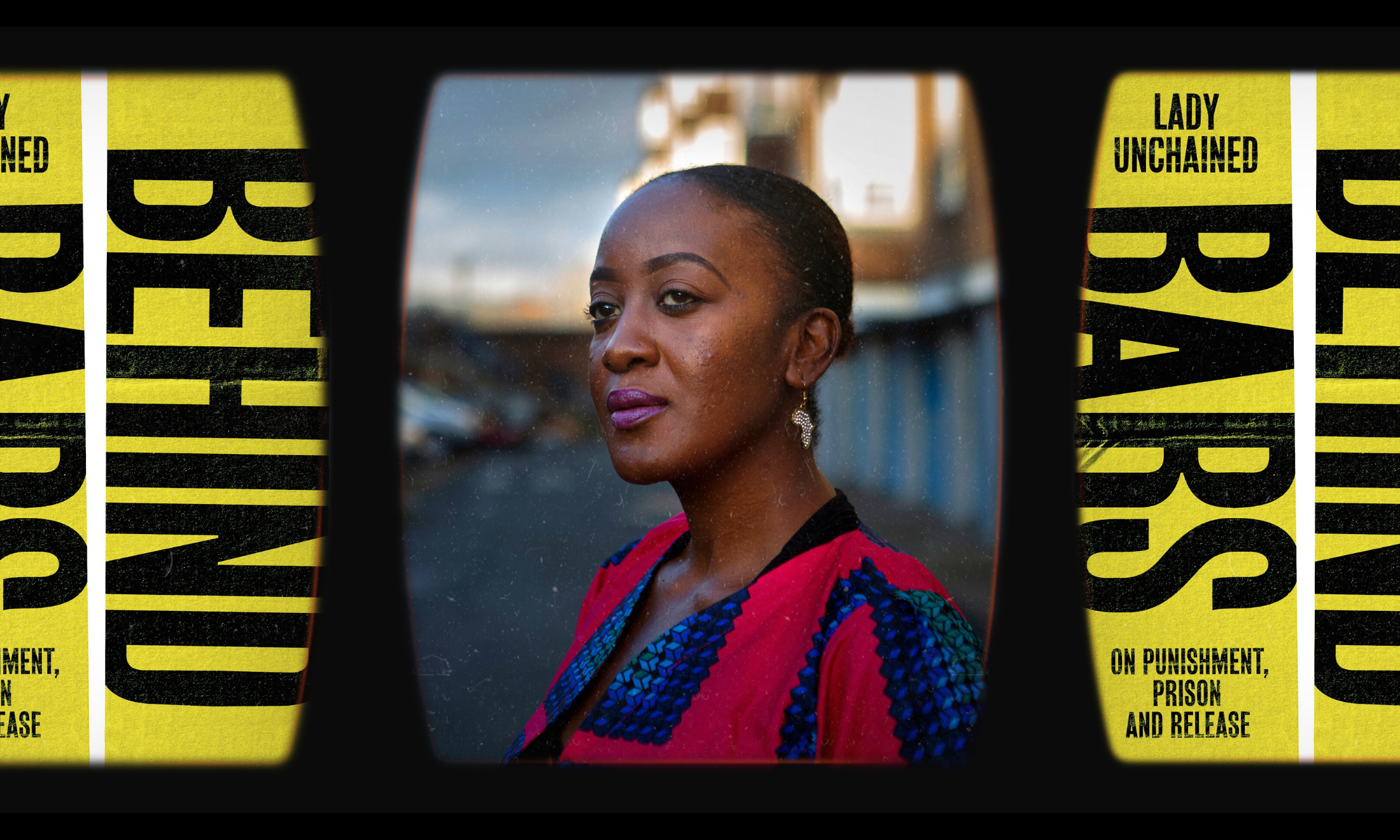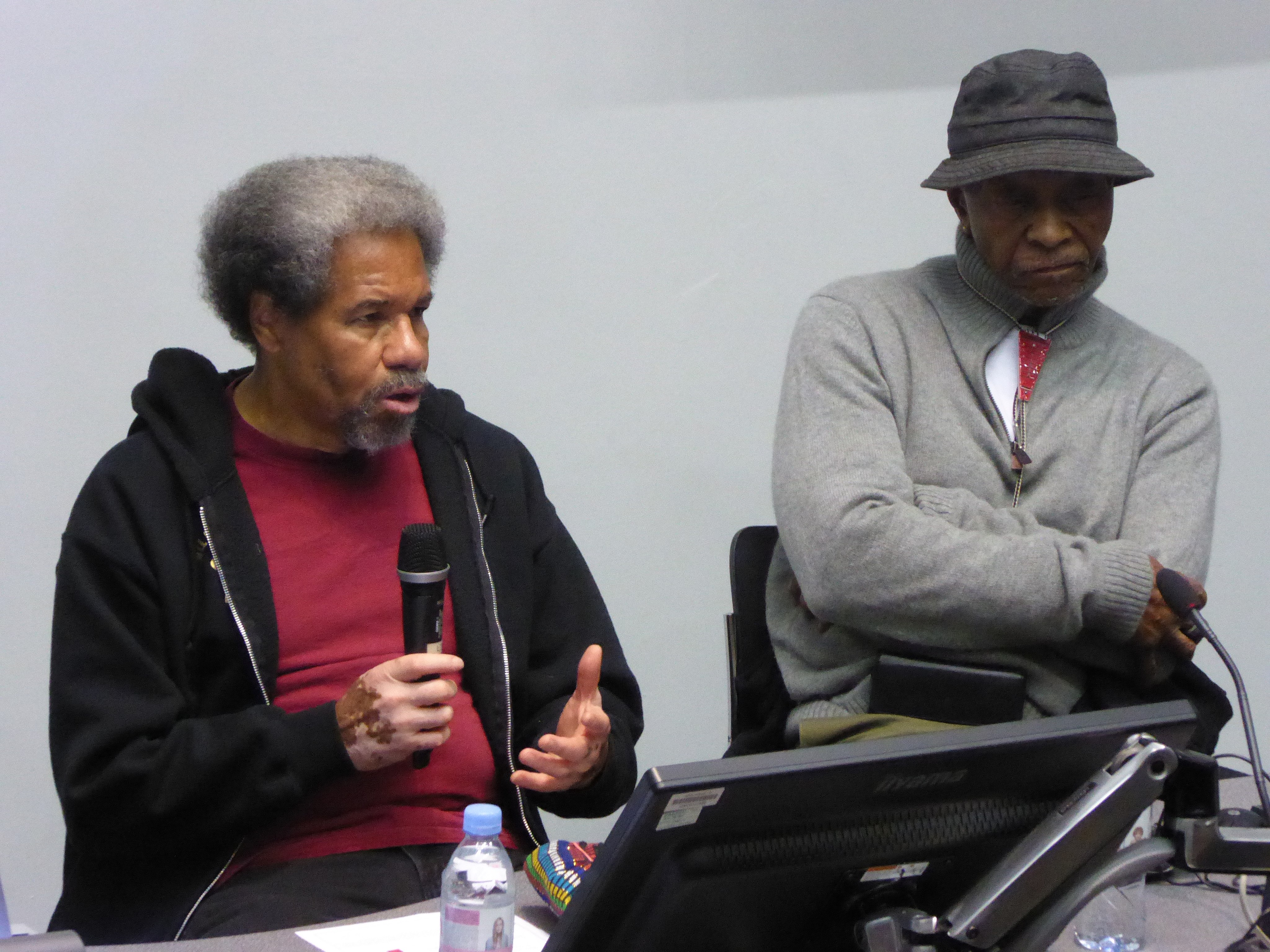
Randolph Johnston, Michael Davis, Raphael Rowe, illustrated by Michelle Wong
Netflix’s brutal miniseries, When They See Us, shocked viewers across the world. Ava Duvernay’s heartbreaking masterpiece retells the emotional story of five black and Latinx boys who became known as the “Central Park Five”. They were wrongfully convicted just 30 years ago for a series of violent crimes which they did not commit.
However, racist miscarriages of justice aren’t unique to the US: just one year prior, in 1988, another case had unfolded involving a series of armed robberies and assaults in different locations along the M25 motorway. Just like the case that caught the attention of the American public, three black men were thrown in the line of fire and charged with the crimes. Over the phone, I speak to Raphael, one of the three men who served a prison sentence for the crime. He tells me: “Our case can only be described as unique because, in the face of the evidence presented by the victims, police and prosecution, everyone involved decided to ignore the truth”.
The men were branded the “M25 Three” by the British media, and after a brief flurry of coverage, their harrowing story quietly became another receipt in the history of Britain’s institutionally racist criminal justice system.
All of the events surrounding the M25 Threes’ case are complex and murky. In the period following the crime spree, residents in nearby Surrey pleaded for the perpetrators to be found, and the search for suspects was reported heavily by media outlets. Even though victims described the assailants as comprising of at least two white men, one with fair hair and blue eyes, in their haste to please the public, the police charged three black men. Raphael Rowe, his best friend Michael Davis and Randolph Johnson, none of whom had blue eyes, found themselves under scrutiny. “During my interrogations, the police were of a particular mindset, no matter what I said to them,” Raphael told me when we spoke on the phone. “As it panned out, evidence began pointing to other suspects, but the police moved the goalposts because we had already been charged.”
“When the system is working against you, it doesn’t matter what evidence there is that contradicts the police’s case”
Raphael Rowe
Because of this, the “other suspects” Raphael mentioned, who more closely fitted the victims’ descriptions – three men named Mark Jobbins, Shane Griffith and Norman Duncan – became key witnesses instead. This shift happened despite the fact that Mark, Shane and Norman had already admitted to handling and hiding some of the stolen property at Mark’s girlfriend’s flat. In a 1993 Court of Appeal hearing, Michael Mansfield QC, who represented the M25 Three, stated that Mark, Shane and Norman had possessed the same type of pistol used by the criminals during the spree, and had disposed of some other cars that were stolen during the robberies. In addition to this, the police discovered Norman’s fingerprints on a stolen green Triumph Spitfire sports car – which was used to carry out a host of other crimes.
For context, the M25 Three were accused of driving the Triumph Spitfire which was central to one of the night’s most horrific attacks. Two men, Peter Hurburgh and Alan Aley, were having sex in an Austin Princess when the vehicle pulled up. They were dragged out of the car, stripped, tied and had petrol poured on them before Peter was beaten to death. Their car was then stolen and driven to the scene of several other crimes including a subsequent stabbing.
Raphael, Michael and Randolph were found guilty on 30 March 1990. The same year in New York City, the Central Park Five were convicted of rape, sexual abuse, attempted murder, assault, robbery and riot. As the M25 Three were sentenced to prison, the judge told the defendants that they were “three evil and dangerous men”. He continued: “Just before Christmas 1988, you struck terror into your victims with the various offences of robbery and violence that you committed.”
Now 49, Raphael tells me that he feels his character was completely “assassinated” during the investigation and trial. From the outset, Raphael believes he, Michael and Randolph were targeted to fit the police force’s goal of swiftly tying up the case, as all three had previous convictions. Raphael explains that although convictions for shoplifting and burglary during his teen years never resulted in prison at the time, they conveniently resurfaced during his ordeal.
Throughout the development of the “M25 gang” case that caught media attention, the police faced some questions over their conduct. One of the key prosecution witnesses, Joanne Ceasar (sometimes spelt Casser in reports), who was 21 at the time, said that the police had “threatened” her while she gave evidence, meaning she was no longer sure that the evidence she gave was reliable. “They pumped me. They kept on and on at me for six or eight hours at a time. They would just sit there,” she told The Independent in June 1993. She explained that she was also pregnant at the time of her police interviews. “No wonder my statements were so detailed and so long, they took so much time pressurising (sic) me.” Because of this, throughout the trial, the paper reported on the “bedrock of doubt” underpinning the peculiar case.
The Crown Prosecution Service (the government agency that handles criminal trials) had only come into existence two years prior to the M25 spree. With pressure for answers, and to prove its efficiency, the body had tried to appease the public by finding men who were easy to target. “When the system is working against you, it doesn’t matter what evidence there is that contradicts the prosecution and the police’s case,” Raphael says. His shortness of breath indicates that he is still shaken by the mistreatment. “When they’re hell-bent on a conviction, anyone will do,” he remarks.
BBC Rough Justice’s investigations found that the police urged Norman to give reasons to explain why and how his fingerprints were on the Spitfire car. The CPS had set aside £25,000 reward money for information that could solve the case, some of which Raphael’s lawyers argued had gone to his accomplices. Meanwhile, the same lawyers grew concerned that Norman had been paid £300 by police for his evidence. He was also paid £10,000 by the Daily Mail for his version of events.
Four years into their sentence, and with this evidence under their belt, they appealed to the European Court of Human Rights. Six years later in 2000, it was concluded that their human rights had been violated. This was in part due to the court’s failure to disclose that one of the key witnesses – Norman Duncan – was a police informant. All three of the men were acquitted and released. There was never a retrial.
Unlawful imprisonment is not only an illustration of the justice system’s failings but also a demonstration of how the government is desensitised to the value of human life.
The writer and director of When They See Us, Ava DuVernay, explained in an interview that her overall objective was to “humanise boys, now men, who were widely regarded as criminals”. The Netflix series opened the eyes of many individuals to the reality of what life can be like going up against the establishment.
“Everyone involved decided to ignore the truth”
Raphael Rowe
Racism in the justice system is clearly not just an American issue. The BBC revealed this year that the Criminal Case Review Commission, a UK-based organisation set up to investigate wrongful convictions including the Birmingham Six, who were falsely convicted for the 1974 Birmingham pub bombings, receive 1,400 applications a year. In 2017, the Lammy Review of Black, Asian and Minority Ethnic (BAME) representation in the criminal justice system revealed that black people in the UK are four times more likely to end up in prison and are actually more disproportionately represented in UK prisons than African Americans in the US.
This bias also extends beyond the criminal justice system, and across the media and news industry which fuels and steers public interest in criminal cases. In both the cases of the M25 Three and the Central Park Five, journalists published unreliable accounts of the crimes and the cases that followed. Raphael recounts reading an article describing him as a “career criminal”, and tells me that he felt he was being publically misconstrued.
“The newspapers informed and updated the general public of the manhunt for the actual perpetrators,” he tells me. “Yet, when we were arrested and locked up for the charge, their reporting of the case changed automatically. We became these violent black, feral men who were shunned for these horrific crimes,”. Tabloid newspapers are well-versed in whipping up public hatred for the figures they select for high-level takedowns.
Raphael shared his concerns at the time about the growing waves of public ill-sentiment. Now, when he looks back, he feels just as disturbed. “Initially, I think the tabloid newspapers were calling for public hanging to be brought back, similarly to the Central Park Five case, when Donald Trump paid for adverts – and imagine if they did? I wouldn’t be here today!”
Agenda setting by journalists is not unheard of, but to what extent should they play a role in someone’s imprisonment or release? According to Lynda Smith, a former BBC reporter, “There is nothing wrong with having an agenda if you are seeking to overturn something that is wrong. The problem lies with the person who is telling the story and the fact that there are insufficient people of colour involved in the storytelling within mainstream media. Their voices are drowned out when they try to counter the narrative.” The unbearable whiteness of newsrooms means that an inherent bias can be present when journalists “pick a side” in criminal cases.
While being kept in solitary confinement, Raphael’s fury accumulated on a daily basis, and he transformed his rage into action. Whilst still in prison, he decided to play the journalists who had a role in his incarceration at their own game by taking a correspondence course. “I thought the only way of engaging them into telling the truth was by gaining an understanding of how they work,” he tells me. “I had no idea it would be something I’d be doing after leaving prison.”
“Whenever we used to see each other, the memories of two young black men living in London being happy-go-lucky individuals come back”
Raphael Rowe
Now, he’s a reporter whose investigations have helped shed light on Britain’s most high profile crimes, notably his explosive Panorama around the death of BBC presenter Jill Dando. It questioned the reliability of the evidence used to convict Barry George, and vital to swaying public opinion before Barry was acquitted at a retrial and freed. True to form, the Evening Standard‘s headline at the time was “Panorama fronted by robber casts new doubt over Dando killer”. Raphael has also recently filmed a show called Inside the World’s Toughest Prisons for Netflix.
In terms of the other two men Raphael shared his painful experience with, he still has a close relationship with Michael, who is now a bus driver. “Whenever we used to see each other, the memories of two young black men living in London being happy-go-lucky individuals come back,” says Raphael. Despite Randolph being the only other person who can relate to what Michael and Raphael went through, during the years imprisoned and to this day, they have not kept in contact. In a sweeter turn of events, the girl Raphael had been seeing before he went to prison eventually became the mother of his child.
As a society, we are taught to believe that there is justice in the legal system, but when you see how institutions treat people of colour, you can’t help but feel like our plight is invisible. Just as Raphael languished in that cell through no fault of his own, many other black people in the UK lose their freedom to incarceration every day.










